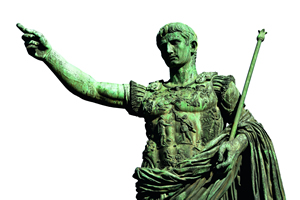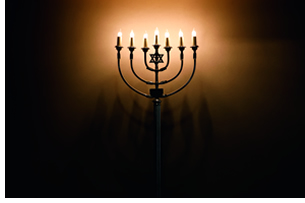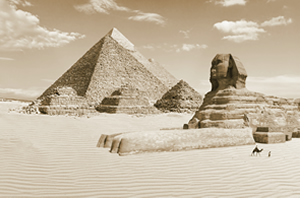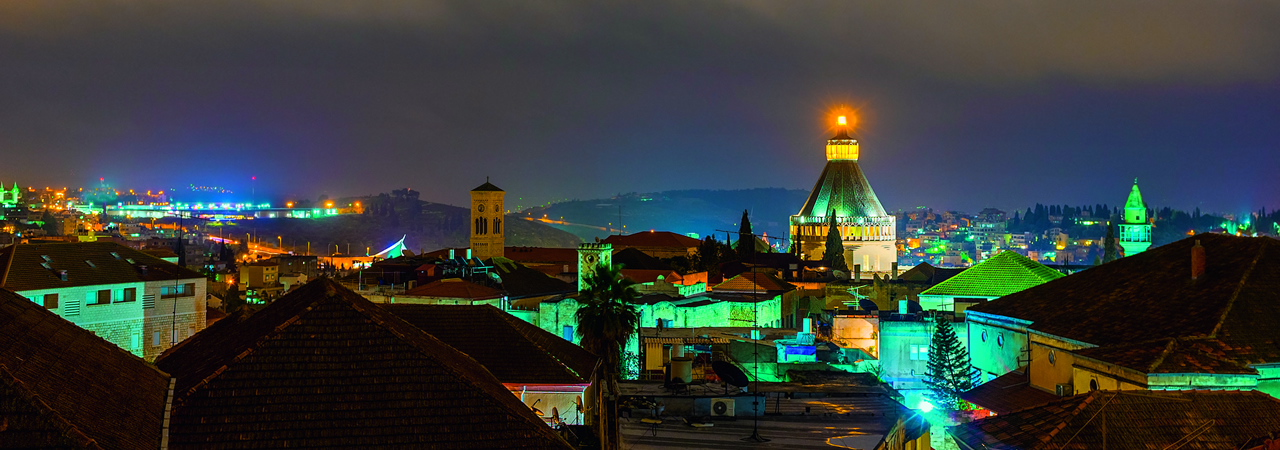From Nazareth to Nazareth
Matthew and Luke give two different sequences of events for the Christmas story. Do they contradict each other? Not in the least! A chronological account.
The Lord Jesus’ birth is described twice in the Bible: in the Gospel of Matthew and the Gospel of Luke. If the two reports are compared, they don’t agree on every point. This makes sense, since otherwise, a single account would have sufficed. But Matthew writes about things in his Gospel that Luke doesn’t mention, and vice-versa.
My goal is to combine the accounts from the Gospels of Matthew and Luke, and to present one possible timeline for the Christmas story. We’ll begin with the annunciation of the Lord Jesus’ birth in the Gospel of Luke: “And in the sixth month the angel Gabriel was sent from God unto a city of Galilee, named Nazareth, To a virgin espoused to a man whose name was Joseph, of the house of David; and the virgin’s name was Mary” (Luke 1:26-27).
The theme is “From Nazareth to Nazareth,” and Luke confirms that Mary lived in Nazareth and that the angel appeared to her there. This is the first step: the Lord Jesus’ birth is announced to Mary in Nazareth before she even becomes pregnant, “And, behold, thou shalt conceive in thy womb, and bring forth a son, and shalt call his name JESUS” (Luke 1:31).
Mary wasn’t yet pregnant when the angel appeared. But then the Holy Spirit came over Mary and she became pregnant, as a result of her trust in God and her words, “Behold the handmaid of the Lord; be it unto me according to thy word” (v. 38).
An angel then appeared to Joseph when Mary was already pregnant. We read this in the Gospel of Matthew, since Luke doesn’t mention Joseph (who was taken completely by surprise). “Now the birth of Jesus Christ was on this wise: When as his mother Mary was espoused to Joseph, before they came together, she was found with child of the Holy Ghost. Then Joseph her husband, being a just man, and not willing to make her a public example, was minded to put her away privily. But while he thought on these things, behold, the angel of the LORD appeared unto him in a dream, saying, Joseph, thou son of David, fear not to take unto thee Mary thy wife: for that which is conceived in her is of the Holy Ghost” (Matt 1:18-20).
When it says that Joseph “was minded to put her away privily,” it means that somehow at some point, he’d noticed his fiancée’s pregnancy. Only then did an angel appear to him as well. This suggests that Mary’s visit to Elizabeth (which only Luke reports) took place when Joseph wasn’t yet aware of the pregnancy.
So, it could have happened as follows: The birth is announced to Mary: “Thou shalt conceive in thy womb.” After her words, “Behold the handmaid of the Lord; be it unto me according to thy word,” she becomes pregnant. This is followed by a visit to Elizabeth (Luke 1:39ff.). And finally, in verse 56 it says, “And Mary abode with her about three months, and returned to her own house.” This means that Mary returns to Nazareth three months pregnant, and doesn’t know how her loyal fiancé will react to these circumstances…up to and including the risk of being stoned as a harlot and adulteress, or at least being cast out. While the visibly shocked Joseph wants to separate from Mary, the angel appears to him with the words, “Joseph, thou son of David, fear not to take unto thee Mary thy wife: for that which is conceived in her is of the Holy Ghost” (Matt 1:20). This is the second step: An angel in Nazareth also announced the Lord Jesus’ imminent birth to Joseph.
This brings us to the Lord’s birth. And where was He born? “In Nazareth, of course; that’s obvious!” But no, anyone who believes that has clearly never attended a Christmas service (and may also believe that Pontius was Pilate’s brother)! The Lord Jesus’ birth took place in Bethlehem, just as God willed and the prophets foretold.
 So, we leave Nazareth temporarily, and come to Bethlehem. This is the third step: the birth of the Lord Jesus in Bethlehem. Luke explains to us how it happened: “And it came to pass in those days, that there went out a decree from Caesar Augustus that all the world should be taxed. (And this taxing was first made when Cyrenius was governor of Syria.) And all went to be taxed, every one into his own city. And Joseph also went up from Galilee, out of the city of Nazareth, into Judaea, unto the City of David, which is called Bethlehem; (because he was of the house and lineage of David:) To be taxed with Mary his espoused wife, being great with child. And so it was, that, while they were there, the days were accomplished that she should be delivered. And she brought forth her firstborn son, and wrapped him in swaddling clothes, and laid him in a manger; because there was no room for them in the inn” (Luke 2:1-7).
So, we leave Nazareth temporarily, and come to Bethlehem. This is the third step: the birth of the Lord Jesus in Bethlehem. Luke explains to us how it happened: “And it came to pass in those days, that there went out a decree from Caesar Augustus that all the world should be taxed. (And this taxing was first made when Cyrenius was governor of Syria.) And all went to be taxed, every one into his own city. And Joseph also went up from Galilee, out of the city of Nazareth, into Judaea, unto the City of David, which is called Bethlehem; (because he was of the house and lineage of David:) To be taxed with Mary his espoused wife, being great with child. And so it was, that, while they were there, the days were accomplished that she should be delivered. And she brought forth her firstborn son, and wrapped him in swaddling clothes, and laid him in a manger; because there was no room for them in the inn” (Luke 2:1-7).
 Mary and Joseph leave Nazareth—under duress—and travel to Bethlehem. That’s a distance of roughly 130 kilometers (80 miles) through partly mountainous terrain. Luke didn’t write that they “went up from Galilee” for nothing: it was no flat stretch of land. And in all this, we mustn’t forget that Mary was heavily pregnant when she and Joseph undertook this long trek. They would have been en route for about a week. Due to the accompanying circumstances and stresses of travel, it wouldn’t have been unusual for Mary to have given birth along the way. Then the Savior of the world wouldn’t have been born in Nazareth or Bethlehem, but somewhere in between. But God arranged it in such a way that the birth occurred only after Mary and Joseph had reached Bethlehem and finally found a place to sleep, according to the prediction of Micah 5:2: “But thou, Bethlehem Ephratah, though thou be little among the thousands of Judah, yet out of thee shall he come forth unto me that is to be ruler in Israel…”
Mary and Joseph leave Nazareth—under duress—and travel to Bethlehem. That’s a distance of roughly 130 kilometers (80 miles) through partly mountainous terrain. Luke didn’t write that they “went up from Galilee” for nothing: it was no flat stretch of land. And in all this, we mustn’t forget that Mary was heavily pregnant when she and Joseph undertook this long trek. They would have been en route for about a week. Due to the accompanying circumstances and stresses of travel, it wouldn’t have been unusual for Mary to have given birth along the way. Then the Savior of the world wouldn’t have been born in Nazareth or Bethlehem, but somewhere in between. But God arranged it in such a way that the birth occurred only after Mary and Joseph had reached Bethlehem and finally found a place to sleep, according to the prediction of Micah 5:2: “But thou, Bethlehem Ephratah, though thou be little among the thousands of Judah, yet out of thee shall he come forth unto me that is to be ruler in Israel…”
On the very evening of the Lord Jesus’ birth, an angel appeared to the shepherds in the field: “And there were in the same country shepherds abiding in the field, keeping watch over their flock by night. And, lo, the angel of the Lord came upon them, and the glory of the Lord shone round about them: and they were sore afraid. And the angel said unto them, Fear not: for, behold, I bring you good tidings of great joy, which shall be to all people. For unto you is born this day in the city of David a Saviour, which is Christ the Lord…And they came with haste, and found Mary, and Joseph, and the babe lying in a manger” (Luke 2:8-11, 16). This is the fourth step: the shepherds at the manger.
Up to this point, everything seems easy to trace, as Luke in particular gives us a nice chronological overview. However, as we’ve already established, Luke doesn’t give a complete report. Instead, he leaves Matthew to supplement what he doesn’t cover. For example, the events with the so-called Magi from the East. Let’s return to the Gospel of Matthew: “Now when Jesus was born in Bethlehem of Judaea in the days of Herod the king, behold, there came wise men from the east to Jerusalem, Saying, Where is he that is born King of the Jews? for we have seen his star in the east, and are come to worship him” (Matt 2:1-2). That is the fifth step: the wise men see a star and go on a journey to Jerusalem.
What we don’t find out, however, is when the wise men really set out. Did they set off immediately after the initial heavenly appearance—possibly on the following day—or did they make inquiries about this extraordinary star? In any case, they must have needed some time to prepare to undertake this long journey. I don’t know, because the text doesn’t state it explicitly. Let’s note, however, that in this fifth point, a star lights up for the wise men to guide them to the birth of the Lord Jesus, a good 1,000 km (620 mi.) away. This is in direct connection with the shepherds’ visit to the manger. And then they make the long journey to Jerusalem, because they were expecting the newborn King of the Jews.
Let’s return to Luke: “And when eight days were accomplished for the circumcising of the child, his name was called JESUS, which was so named of the angel before he was conceived in the womb” (Luke 2:21). Mary and Joseph are still in Bethlehem, but probably no longer in a stable with a nativity scene. They most likely found normal accommodations in the meantime. And eight days after the birth and the shepherds’ visit, the child is circumcised, as the law requires. This is the sixth step: the Lord Jesus’ circumcision in Bethlehem, while the wise men from the East have set out to pay their respects to the newborn King of the Jews.
Next, we read: “And when the days of her purification according to the law of Moses were accomplished, they brought him to Jerusalem, to present him to the Lord; (As it is written in the law of the LORD, Every male that openeth the womb shall be called holy to the Lord)” (Luke 2:22-23). This is step seven: the offering of the Lord Jesus in the temple in Jerusalem, to fulfill the command in Leviticus 12:1-4. After about forty days, Mary and Joseph went to Jerusalem, which is only about 10 km (6 mi.) from Bethlehem. This means that Mary and Joseph stayed in Bethlehem for at least 40 days. This also means that all of their relatives (grandmas, grandpas, godparents, and everyone else), 130 km (80 mi.) away in Nazareth, hadn’t even seen the baby Jesus yet. But now, after about 40 days, the family is in Jerusalem, and the wise men from the East are somewhere along the Euphrates.
As we read further in Luke’s Gospel, we see that Mary and Joseph return to Nazareth from Jerusalem with their child: “And when they had performed all things according to the law of the Lord, they returned into Galilee, to their own city Nazareth” (Luke 2:39). Home at last. Finally home, back in their city. And finally, the waiting relatives could embrace the young family and shower them with gifts…yes, if not for Matthew.
Something’s still missing. What about the Magi from the East? Did they not accomplish their goal? And wasn’t there still the infanticide in Bethlehem, and an escape to Egypt? Actually, yes—but when, and how? As I said, we could assume from Luke’s account that the family returned to Nazareth from Jerusalem. According to Matthew, however, it appears that the family didn’t return until much later. Let’s shed some light on this supposed contradiction.
Again, if we only had Luke’s Gospel, we’d have to assume that the family returned to Nazareth after Jesus’ circumcision and presentation. This is basically the first scenario, and it isn’t that different from the other possibility that we’re about to see. But if that was really the case, then Jesus’ family must have returned to Bethlehem at some point, because the Magi worshiped the Lord. And that hasn’t occurred yet.
Before we go down this path, let’s briefly look at a second scenario: one where the family went back to Bethlehem instead of Nazareth. Then Luke would have omitted relevant events from his report. These events reported by Matthew would have taken place between the statements in Luke 2:39: “And when they had performed all things according to the law of the Lord…”; then comes the big gap (the events that Luke skips), and it continues with, “…they returned into Galilee, to their own city Nazareth.”
That means that Mary and Joseph would have returned to Bethlehem from Jerusalem with their six-week-old child, perhaps even intending to settle in Bethlehem. In this case, the wise men would have appeared a while later, the cruel infanticide and the escape to Egypt would have taken place…and only then would Mary and Joseph have returned to Nazareth.
But let’s return to the first idea: namely, that the family made their way from Jerusalem to Nazareth, the city where Mary and Joseph had originally lived, and where their parents and relatives were longing for their return. During this time, the wise men from the East were still on the long trek toward Jerusalem. Jesus’ family is living in Nazareth again, and it’s been almost two months since the Lord was born. And now we learn, almost incidentally, an important detail from Luke 2:41: “Now his parents went to Jerusalem every year at the feast of the passover.”
 Mary and Joseph were very pious people, so they made their way to Jerusalem at least once a year. There were three pilgrimage festivals for which devout Jews went to Jerusalem: the Feast of Tabernacles, the Feast of Weeks, and Passover, the one mentioned here. The Lord Jesus was already twelve years old at the Passover festival spoken of in Luke 2:41, but it’s very likely that the family had moved to Jerusalem in the intervening years. And that would mean that a few months after their arrival in Nazareth, the family went back to Jerusalem, either for the Passover festival, or for one of the other pilgrimage festivals. In addition, it’s well over 100 km (60 mi.) from Nazareth to Jerusalem—requiring more than just a day trip. Since Jerusalem must have been quite overcrowded during these festivals, it’s more than likely that Mary and Joseph made their home in Bethlehem (especially since Joseph was originally from Bethlehem, and would have been able to arrange lodgings with relatives).
Mary and Joseph were very pious people, so they made their way to Jerusalem at least once a year. There were three pilgrimage festivals for which devout Jews went to Jerusalem: the Feast of Tabernacles, the Feast of Weeks, and Passover, the one mentioned here. The Lord Jesus was already twelve years old at the Passover festival spoken of in Luke 2:41, but it’s very likely that the family had moved to Jerusalem in the intervening years. And that would mean that a few months after their arrival in Nazareth, the family went back to Jerusalem, either for the Passover festival, or for one of the other pilgrimage festivals. In addition, it’s well over 100 km (60 mi.) from Nazareth to Jerusalem—requiring more than just a day trip. Since Jerusalem must have been quite overcrowded during these festivals, it’s more than likely that Mary and Joseph made their home in Bethlehem (especially since Joseph was originally from Bethlehem, and would have been able to arrange lodgings with relatives).
In this scenario, Jesus’ family would have arrived back in Bethlehem in connection with their visit to the Passover festival. These are steps eight and nine: the return to Nazareth, and the new departure for Bethlehem and Jerusalem. And so, we return to Matthew’s Gospel for what Luke doesn’t talk about: “Then Herod, when he had privily called the wise men, enquired of them diligently what time the star appeared. And he sent them to Bethlehem, and said, Go and search diligently for the young child; and when ye have found him, bring me word again, that I may come and worship him also. When they had heard the king, they departed; and, lo, the star, which they saw in the east, went before them, till it came and stood over where the young child was” (Matt 2:7-9).
As mentioned before, we don’t know when the Magi set out, nor when they arrived in Jerusalem or Bethlehem. But we can assume they came from the region of Babylon and Persia, which means that it took them at least a year and a half to reach Jerusalem. And that lines up: both with the first possibility (according to which Jesus’ family already lived in Bethlehem because Joseph had settled there), as well as the second (in which the Lord Jesus was 6-18 months old when the Magi finally arrived in Bethlehem, depending on which pilgrimage festival the family was visiting).
In either case, what happened next is clear: the Lord Jesus was no longer in a manger, but He also couldn’t have been more than two years old when the Magi visited him: “And when they were come into the house, they saw the young child with Mary his mother…” (Matt 2:11). This is the tenth step. There is no stable, no cave, no nativity scene, and no shepherds here. The wise men were never at the manger, and never met the shepherds. Jesus’ family was living in a house at that time. We also learn from verse 16 that Herod wanted all boys aged two years and younger to be killed. As a result of Herod’s fit of rage, the flight into Egypt took place.
This is step eleven: the flight into Egypt. “And when they were departed, behold, the angel of the Lord appeareth to Joseph in a dream, saying, Arise, and take the young child with his mother, and flee into Egypt, and be thou there until I bring thee word: for Herod will seek the young child to destroy him. When he arose, he took the young child and his mother by night, and departed into Egypt: And was there until the death of Herod: that it might be fulfilled which was spoken of the Lord by the prophet, saying, Out of Egypt have I called my son” (Matt 2:13-15).
The stay in Egypt was an integral part of God’s plan for salvation, just as it was predicted that the birth of the Lord Jesus would be through a virgin; just as it was prophesied that the promised Redeemer would come from the tribe of Judah and from David’s family; and just as the birth in Bethlehem was prophesied. As it says in Hosea 11:1, “…[I] called my son out of Egypt.” We see that God leaves nothing to chance. His actions are always goal-oriented. Isn’t that an encouragement for us today as well? We can be certain that we’re not left to chance or fate, or even the arbitrariness of any would-be power, but are surrounded by the goodness and love of God. Any person who can count himself among the children of God can consider himself blessed! How did Paul say it in Philippians 3:8? “I count all things but loss for the excellency of the knowledge of Christ Jesus my Lord.” In other words, “Without Jesus, I have nothing!” And stated in reverse, the word from 2 Corinthians 6:10 still applies: “…having nothing, and yet possessing all things.”
Back to Egypt. How long Joseph and his family remained isn’t stated, but historiography tells us that Herod died only a short time later. With his death, the return to Israel took place, so their stay in Egypt wouldn’t have lasted too long. Only now does the Gospel of Matthew report that Mary and Joseph settled in Nazareth again. This is step twelve: the return to Nazareth. This is either the first since the Lord Jesus’ birth (maybe after as much as two years), or another return after having attended the Passover festival in the meantime.
“But when Herod was dead, behold, an angel of the Lord appeareth in a dream to Joseph in Egypt, Saying, Arise, and take the young child and his mother, and go into the land of Israel: for they are dead which sought the young child’s life. And he arose, and took the young child and his mother, and came into the land of Israel. But when he heard that Archelaus did reign in Judaea in the room of his father Herod, he was afraid to go thither: notwithstanding, being warned of God in a dream, he turned aside into the parts of Galilee: And he came and dwelt in a city called Nazareth: that it might be fulfilled which was spoken by the prophets, He shall be called a Nazarene” (Matt 2:19-23).
The wording of verse 22 strongly suggests that Joseph and his family didn’t want to go to Nazareth, but to Bethlehem. As it states, he was afraid to go to Judea (Bethlehem was in Judea) because Archelaus ruled there. It was only because of a dream that Joseph moved back to Nazareth. As mentioned earlier, it is very likely that Joseph wanted to settle in Bethlehem, or had already done so. But God—who once made sure that Mary and Joseph had to leave Nazareth and go to Bethlehem—now made sure that Mary and Joseph didn’t return there, but instead returned to Nazareth. That too was an integral part of God’s plan of salvation, as it is written: “that it might be fulfilled which was spoken by the prophets, He shall be called a Nazarene.”
And with that, we’re back in Nazareth. From Nazareth, to Nazareth. We can see that the Word doesn’t contradict itself, but is a unique revelation from God to us humans. The Lord’s entire plan of salvation runs through the Bible like a guiding thread. It is we humans who are deaf to God’s words. It is we humans who constantly contradict each other. And it is we humans who proceed from false assumptions. But God doesn’t contradict Himself. His words are clear, true, precise, unique, sovereign, omnipotent, and unshakable.
 It is fascinating how God achieves His objective with His Word and His plan of salvation. He causes a Roman emperor to order a census at precisely the right moment, which ultimately leads to the Lord Jesus being born in the right place at the right time. He uses a vain and fearsome tyrant named Herod, to see to it that the Word is fulfilled: “…[I] called my son out of Egypt.” God uses a man of power named Archelaus, no less cruel than his father, to ensure that Jesus doesn’t grow up in Bethlehem but in Nazareth, so that He will be called a Nazarene.
It is fascinating how God achieves His objective with His Word and His plan of salvation. He causes a Roman emperor to order a census at precisely the right moment, which ultimately leads to the Lord Jesus being born in the right place at the right time. He uses a vain and fearsome tyrant named Herod, to see to it that the Word is fulfilled: “…[I] called my son out of Egypt.” God uses a man of power named Archelaus, no less cruel than his father, to ensure that Jesus doesn’t grow up in Bethlehem but in Nazareth, so that He will be called a Nazarene.
Nothing happens by chance, because heaven and earth will pass away, but God’s Word remains forever (Matt 24:35). And so, with firm trust in His Word, we can conclude with 1 Thessalonians 2:13: “For this cause also thank we God without ceasing, because, when ye received the word of God which ye heard of us, ye received it not as the word of men, but as it is in truth, the word of God, which effectually worketh also in you that believe.”
Midnight Call - 12/2020


